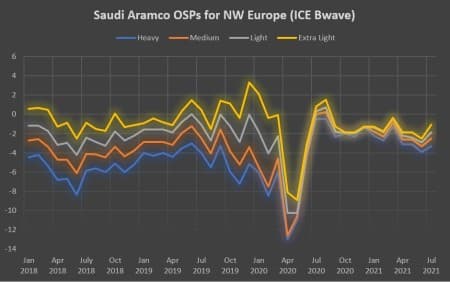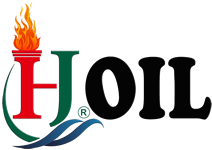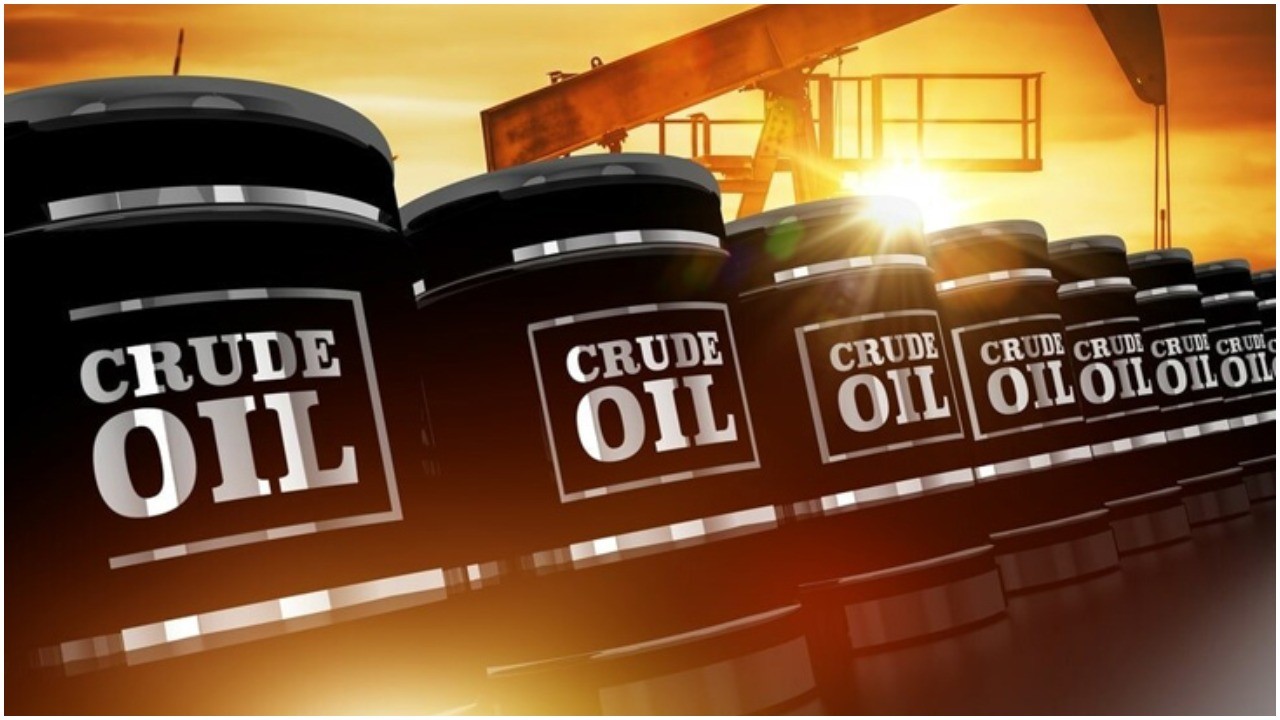Middle East Oil Prices Rise As Global Demand Recovers
By HJ OIL- Jun 16, 2021, 10:00
Trade Oil Futures Now
Asia Demand Recovery Sparks July Pricing Hope First to confront the third wave of the COVID-19 pandemic, Europe and North America are now spearheading the demand recovery in the oil market. In fact, demand outstripping supply has seen oil prices breach the $70 per barrel mark and, contrary to several instances in May when intra-day trading stood above $70 per barrel yet Brent settlements slid down eventually, the global benchmark is now comfortably above another threshold. Such a sequence of events would imply that Asian demand, with a 2-3 month’ time lag, should recover by summer, adding another much-needed thrust into the global recovery. Spot differentials have picked up on the heels of improving demand, consequently, changes in Middle Eastern OSPs for July 2021 were to be expected.
Surprising the market with the extent of its price increases, Saudi Aramco raised its light and medium grades by 10-50 cents per barrel. Arab Super Light saw the highest month-on-month increase, moving to a $2.85 per barrel premium over the Oman/Dubai average, the highest this year. Arab Extra Light, a slightly more sulfurous quality peer to Murban, was raised by 40 cents per barrel, to a $1.90 per barrel premium to Oman/Dubai. The surprise element in Aramco’s July hike boils down to the relatively marginal changes in the Dubai cash-futures spread, considered to be a key parameter of price setting, rising only 10 cents per barrel month-on-month. The only outlier grade, the Asian OSPs of which were in fact decreased month-on-month from June, is Arab Heavy, having receded 10 cents per barrel from the $0.50 per barrel premium to Oman/Dubai last month. The primary reason for Arab Heavy losing traction lies in Asian fuel oil cracks remaining weak across Asia.
Graph 1. Saudi Aramco OSPs for Northwest Europe (vs ICE Bwave).
One of the main factors underlying the aggressive pricing policy of Saudi Aramco is the wide Brent-Dubai exchange of futures for swaps, abbreviated EFS, a market indicator that assesses the spread between light sweet crudes (such as Brent) and medium-heavy sour ones has continued to hover around the $3 per barrel mark and thus barring any sizeable amount of arbitrage barrels coming in from Europe or West Africa. Thus, East Asian refiners are finding long-haul voyages of light sweet grades, arguably the only sort that currently generates solid profits on the heels of convalescing gasoline cracks, rather uneconomical, allowing Saudi Aramco to hike differentials even on grades that tilt towards the heavier side.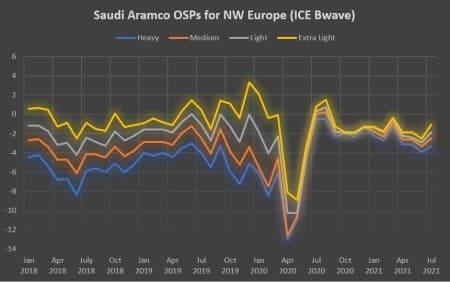
Graph 2. Iraqi OSPs for Asia in 2018-2021 (vs Oman/Dubai average).
The Iraqi state oil marketer SOMO followed in the footsteps of Aramco and hiked its Asia-bound July OSPs for medium-heavy grades by 15-20 cents per barrel, simultaneously cutting Basrah Heavy prices by 10 cents per barrel to a -1.40 per barrel discount to the Oman/Dubai average. European official prices witnessed month-on-month hikes of 15-40 cents per barrel, with the Kirkuk July OSP rolled over from June. One of the most peculiar trends with regards to Iraqi pricing is the revival of sizeable US exports – this month will mark the highest monthly Iraqi arrivals since May 2020, at 220kbpd. Most of these barrels loaded in May; at that point, Iraqi grades, especially Basrah Heavy, emerged as an unexpectedly solid variant on the back of three consecutive months of US-bound price decreases.
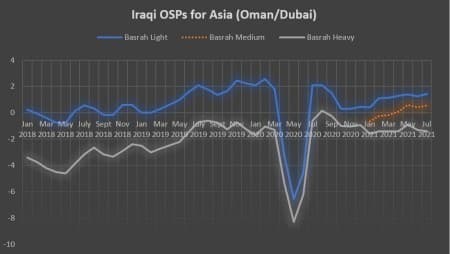
Related: How An Oil Pipeline Hack Sent Bitcoin Prices Tumbling
There were no Basrah loadings so far in June that would indicate the US as their final destination, most probably reflecting on the OSP hikes last month. July, however, could once again see a rebound in Iraqi exports to the United States as SOMO’s latest OSPs see across-the-board month-on-month cuts by 10-15 cents per barrel. Another noteworthy trend taking place in Iraq has been Baghdad’s gradual refinery modernization drive, with the 140kbpd Daura refinery launching a new continuous catalytic reforming unit that will boost gasoline production within the domestic downstream sector. Perhaps even more importantly, the 210kbpd Basrah refinery has started the construction of its own fluid catalytic cracker and a diesel desulphurization unit of similar scope, meaning that by 2024 (when the refinery upgrade is supposed to be ready) Basrah might see a different split of export grades by volume. Moreover, Iraq would phase out most of its tender-based gasoline imports by 2024-2025 which cost the government more than $2 billion per year.
Graph 3. Iraqi OSPs for Europe 2018-2021 (vs Dated Brent).
With five rounds of Vienna nuclear talks completed and presumably several more ahead, many refiners who were buying Iranian barrels in the pre-sanctions era started to prepare for their gradual return. Some Indian companies already indicated their readiness to buy Iranian, highlighting that before 2018 credit and freight terms offered by NIOC (i.e. deferred payment deadlines and the privilege of NIOC’s own tanker fleet) often proved to be more commercially advantageous than other Middle Eastern variants. Cognizant of the above, the Iranian national oil company set its July 2021 official selling prices with a clear intent of wooing buyers – it hiked the Asia-bound price of Iranian Light by 10 cents per barrel (to a $1.6 per barrel premium over Oman/Dubai) and rolled over Iranian Heavy from June. With this, the Arab Light-Iranian Light spread rose to its highest since March 2020, at -$0.30 per barrel.

Graph 4. Iranian OSPs for Asia (vs Oman/Dubai average).
Even in the Mediterranean, the second-largest outlet pool for Iranian crude before 2018, NIOC chose to keep a solid 10/20 cents per barrel in contrast to Aramco pricing. It hiked the Iranian Light OSP by 80 cents per barrel to a -$2.95 per barrel discount to ICE Brent, i.e. 20 cents less than its direct Saudi peer Arab Light, whilst Iranian Heavy was increased by 50 cents to a -$4.7 per barrel discount to ICE, i.e. 10 cents less than Arab Medium. The likelihood that Iranian barrels would start flowing to Europe still remain extremely slim, nevertheless, Iran’s pricing decisions reflect its willingness to be flexible and go the extra mile to lure customers once it is allowed to export crude unimpeded.
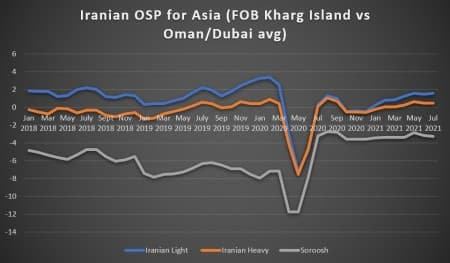
Graph 5. ADNOC OSPs in 2017-2021 (Dubai/IFAD).
Following a rather volatile first month of trading in April, IFAD’s performance last month turned out to be much more robust and stable, proving that relying on market forces to set the forthcoming OSPs does indeed work in the Middle East (if needed). The formation period of the Dubai futures benchmark is still far from over - over the course of May, Morgan Stanley has joined the ranks of Goldman Sachs and BNP Paribas to become an official clearing member of the IFAD exchange. Murban’s July 2021 OSP settled at $66.70 per barrel, equivalent to a $1.67 per barrel premium to front-month Dubai assessments. As for Das and Umm Lulu differentials to Murban, ADNOC has rolled them over from June, opting to alter only the heavier Upper Zakum, by 10 cents per barrel m-o-m to a 50 cent discount to Murban.
